Pollinators on the Refuge
Welcome to your pollinator garden! This space was created and is maintained by dedicated Friends of the Refuge volunteers. If you are interested in making a difference on your public lands please reach out to Isabella_Padgett@FWS.gov or stop by the Visitor Center. We couldn’t do what we do without volunteers like you! Thanks to the Friends of the Tualatin River NWRC for their execution of this project, and thanks to the partners that made these beautiful gardens possible: Bosky Dell Natives, Sherwood Rotary 5100, and One Tree Planted.
Garden Design
There are 6 mini pollinator gardens throughout the Refuge Headquarters planting beds. Each garden was designed with a different purpose in mind. Every species was selected based on its value to native pollinators, tolerance of changing climatic conditions, and suitability for this space. We invite you to start at Garden 1 near the flagpole and see our other gardens as you walk toward the wetland overlook.
Your Gardens
Garden 1 is located in the Northeast corner of the planting bed near the flagpole. This garden features a mix of sun loving plants including Douglas aster and Oregon sunshine.
Garden 2 is a showy wildflower garden featuring some of our loveliest native wildflowers like checkermallow and camas.
Garden 3 is composed of plants that help soils! Some species like riverbank lupine fix nitrogen in the soil, making this valuable nutrient available for other plants to use.
Garden 4 shows what a low maintenance pollinator garden can look like! These species are tolerant of a variety of conditions, can outcompete weeds, and don’t require seasonal maintenance like pruning.
Garden 5 was thoughtfully designed with native pollinators in mind. Many native pollinators are only out and about for a short period each year, with native bees being active for an average of five weeks. During this time, they need pollen and nectar to feed themselves and their offspring. It is especially important that we choose plants that will bloom throughout the growing season so that all our pollinators can have ready access to the nutrition they need when they emerge. The plants in this garden bloom from early spring to early autumn.
Garden 6 is climate adaptive, meaning that these plants are tolerant of varying conditions including long, dry summers. These plants can survive and thrive with minimal watering and maintenance once established.
Plant Species
Douglas aster (Symphyotrichum subspicatum) blooms in late summer and provides critical resources to native pollinators.

Riverbank lupine (Lupinus rivularis) is a favorite of bumblebees and butterflies. showstopper is tolerant of a wide variety of conditions.
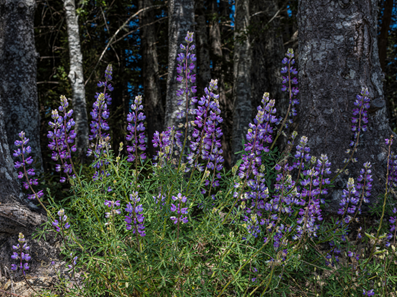
Checkermallow (Sidalcea spp.) is a gorgeous forb that you might see in a prairie or oak savanna habitat. This pink beauty is visited by a variety of native pollinators.

Beach daisy (Erigeron glaucus) is an underrated native pollinator plant! This little beauty won’t take up much space in your garden, but will provide gorgeous pale purple blooms as well as important pollinator forage.
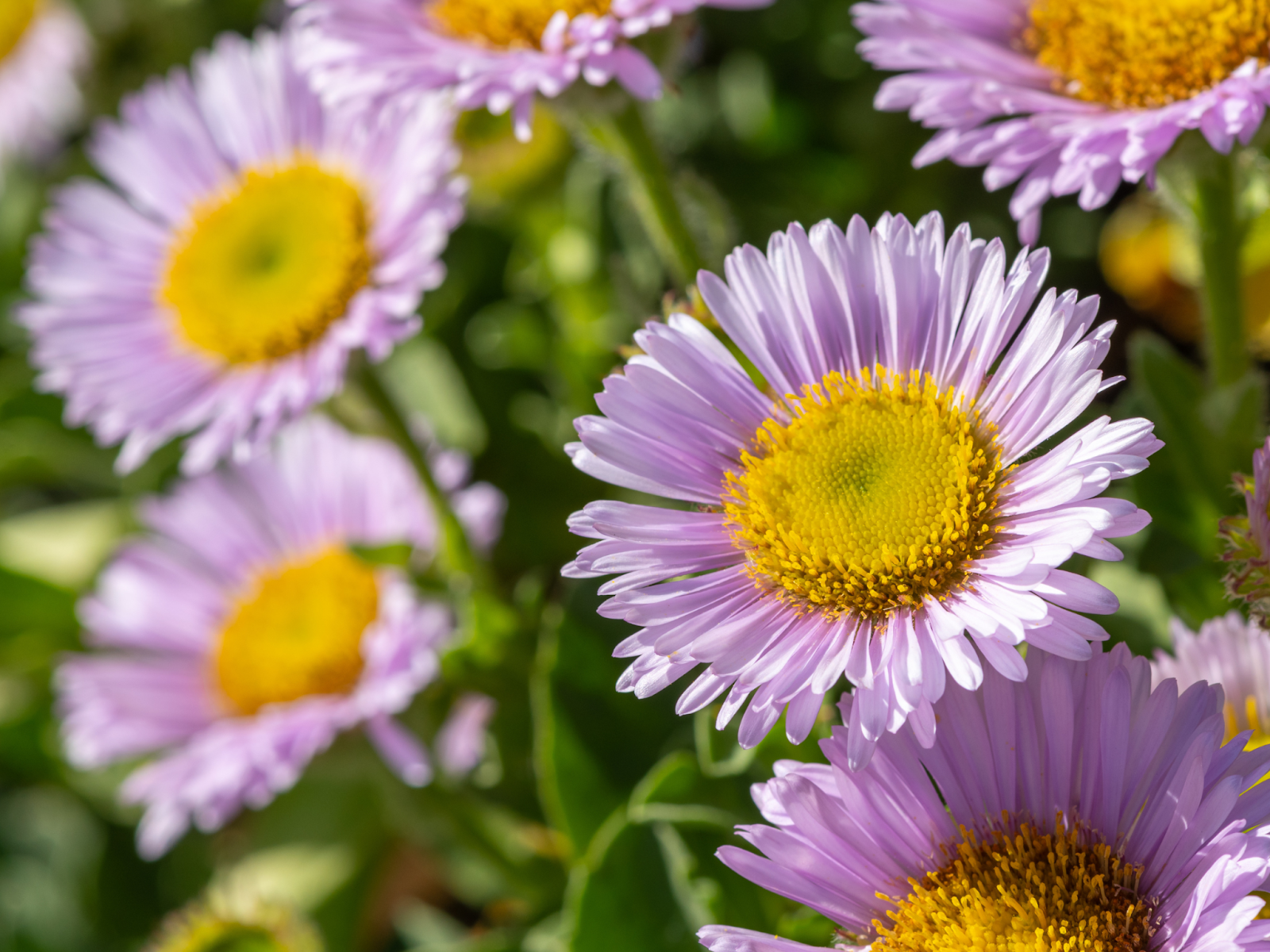
Oregon sunshine (Eriophyllum lanatum) is a sun loving and drought tolerant native. It blooms in the spring and is a hardy ground cover.
Farewell to Spring (Clarkia spp.) is a self-seeding annual that blooms in the late spring and into summer as its common name suggests. It features showy, bright pink blooms that are a favorite of some of our most vibrant pollinators like the metallic green sweat bee (Agapostemon virescens).
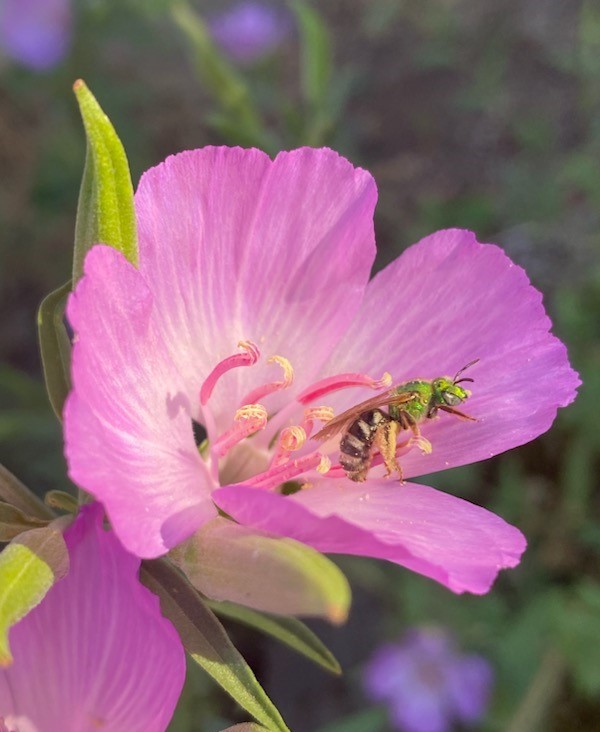

Camas (Camassia spp.) is a beautiful plant that is culturally significant to indigenous communities. It features a showy blue-violet bloom that is highly attractive to native pollinators.

Penstemon (Penstemon spp.) is a genus of beautiful native forbs that are not only attractive to pollinators, but some pollinators like the native mason bee, Osmia brevis, are penstemon specialists. This means that some bees have evolved so closely with certain flowering plants that they need those plants to survive! Penstemons are a great choice if you are interested in supporting these picky pollinators.
Golden paintbrush (Castilleja levisecta) was previously listed as a threatened species, but due to the tireless efforts of the USFWS and partnering land managers throughout the PNW it was delisted this year. You might catch a glimpse of this late spring beauty while out on the refuge trails!
Yellow monkeyflower (Erythranthe guttata) is a favorite of scientists! This little flower is used as a model organism to study genetics, plant-insect interactions, and many other topics. It is also a favorite of bumblebees.

Early blue violet (Viola adunca) is another show stopping groundcover that will add a pop of color to any corner of your garden. It is the larval host plant of the threatened Oregon silverspot butterfly!
Douglas meadowfoam (Limnathes douglasii) is a self seeding annual that our smallest pollinators adore. Plant this low maintenance beauty in a mostly sunny place.
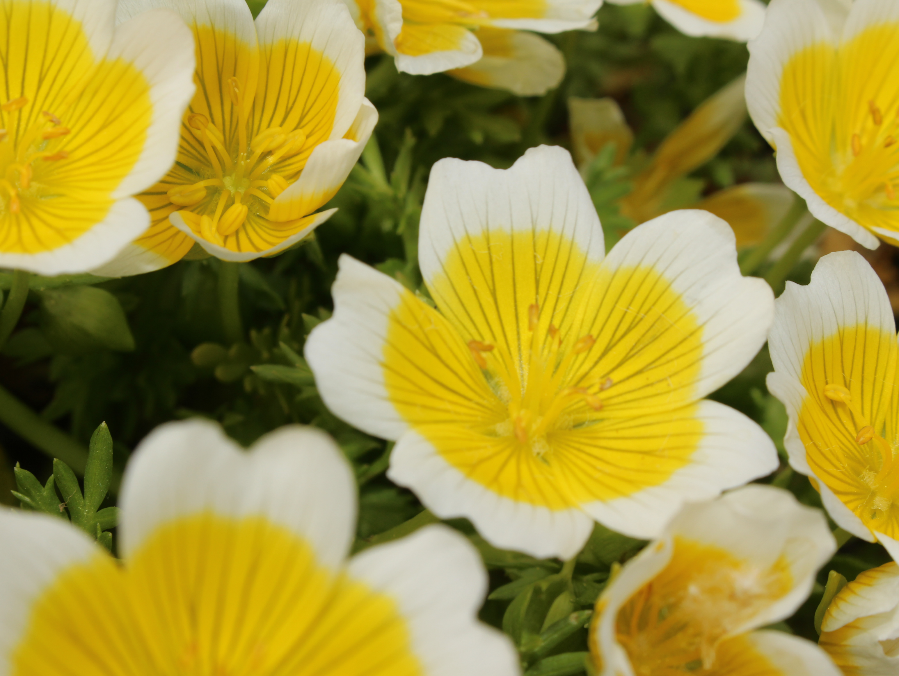
Resources
Are you interested in supporting pollinators where you live? Whether your home is a studio apartment, sprawling acreage, or anything in between, YOU can make a difference for our flower-loving friends.
Forage
Native pollinators need native plants! They havecoevolved to meet each other’s needs. Native plants will support far more biodiversity in your outdoor space than their non-native counterparts. It is also important to consider when plants will bloom. Pollinators often forage on the pollen and nectar from flowers, so they need a selection of blooms throughout the growing season to feed themselves and their families!
There are abundant resources out there on how to get started planting for pollinators; so many that it can seem overwhelming! TheXerces Society is a great place to learn about pollinators and their needs. Below are some additional resources to help you get started.
If you’re asking yourself, “What should I plant?” you aren’t alone! Below are two great resources if you live in the Willamette Valley. If you are visiting us from farther afield, check out the Xerces Plant List for your region.
Native Plant Picks for Bees | OSU Extension Service (oregonstate.edu)
Native Plants for Pollinators and Beneficial Insects: Maritime Northwest Region | Xerces Society
Now that you have your favorite native plants picked out, you might be asking yourself, “Where am I supposed to get plants?”. We recommend the native nurseries listed below. If you find a native nursery not listed below that you want to visit, check out this quick guide tobuying bee-safe plants. Plants grown for commercial sale may be treated with systemic insecticides that may be harmful to foraging pollinators. These insecticides move into the plant’s tissues and sometimes can be detected in the pollen and nectar that bees and butterflies are collecting and consuming. The Friends of the Tualatin River NWRC host an annual native plant sale in partnership with Bosky Dell Natives every Fall. Check our Calendar of Events to see what’s coming up!
Welcome - Champoeg NurseryChampoeg Nursery
Now that you are well on your way to supporting the pollinators in your community, you might be wondering, “Who am I planting for?”. We are so glad you asked! Check out this handy publication on the wonders of native bees, our most efficient pollinators.
Bee_Basics_North_American_Bee_ID.pdf (usda.gov)
Habitat
Maybe you aren’t ready to plant quite yet, but you can still support pollinators! Providing pollinators with a place to nest is just as crucial as ensuring they are well fed.
Did you know… most native bees can’t sting! The non-native European honeybee (Apis mellifera) and bumble bees are some of the few bees that can sting to protect their nests. Wasps and hornets are responsible for many insect stings.
About 70% of native bees nest in the ground. They typically prefer gravel or bare dirt that doesn’t flood often.
Tip: You can support these bees by leaving bare dirt or gravel in your yard or garden. Avoid landscaping fabrics and plastics, and avoid treating the ground with pesticides.
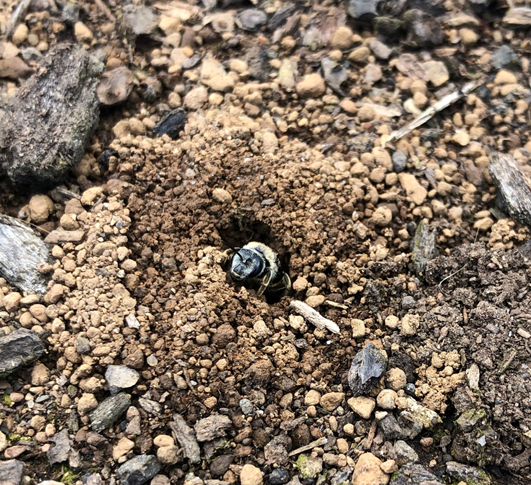
The other 30% of native bees nest in cavities like abandoned beetle galleries, broken stems, or even holes in lava rock!
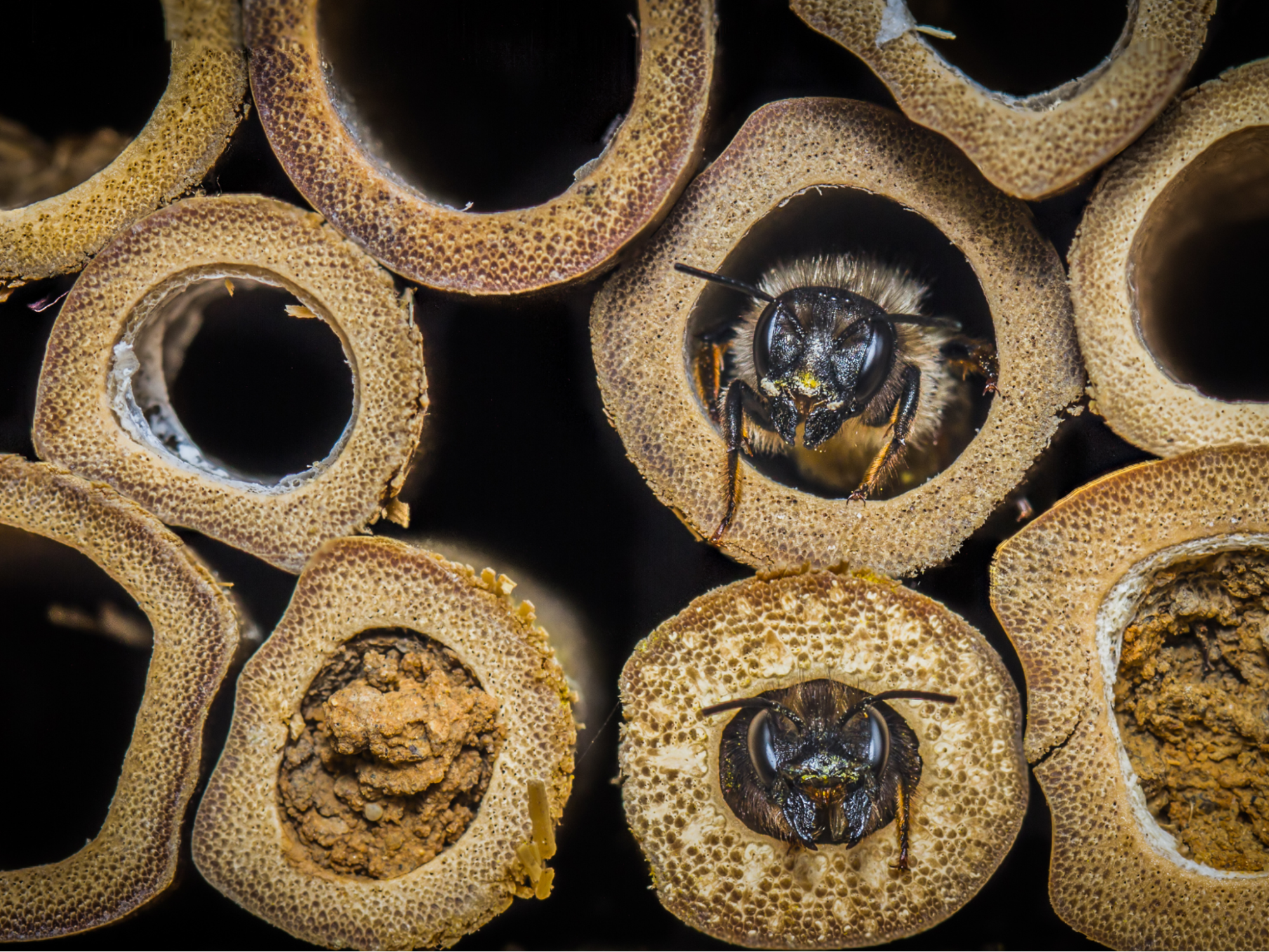
Tip: you can help these pollinators by leaving logs in your yard, or cutting the pithy stems of your sunflowers, black eyed Susans, and others to about 12” and leaving them standing in the Fall.
Besides nesting habitat, you can easily modify your bird bath (or even a pan, dish, or concave rock) to help pollinators! Placing a few small stones in a shallow container that collects water allows bees and butterflies to stop for a sip without falling in.

(Image: National Wildlife Federation)
Still feeling like you need a hand? Check out the organizations below and ask an expert!
Backyard Habitat Certification Program - Backyard Habitats
Bees and pollinators | OSU Extension Service (oregonstate.edu)
Thanks for be(e)ing a friend!








